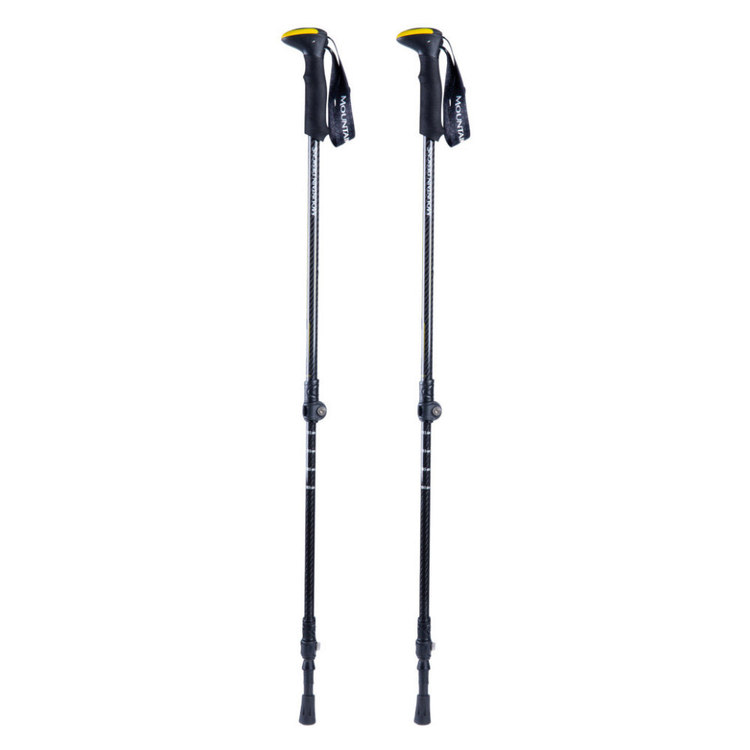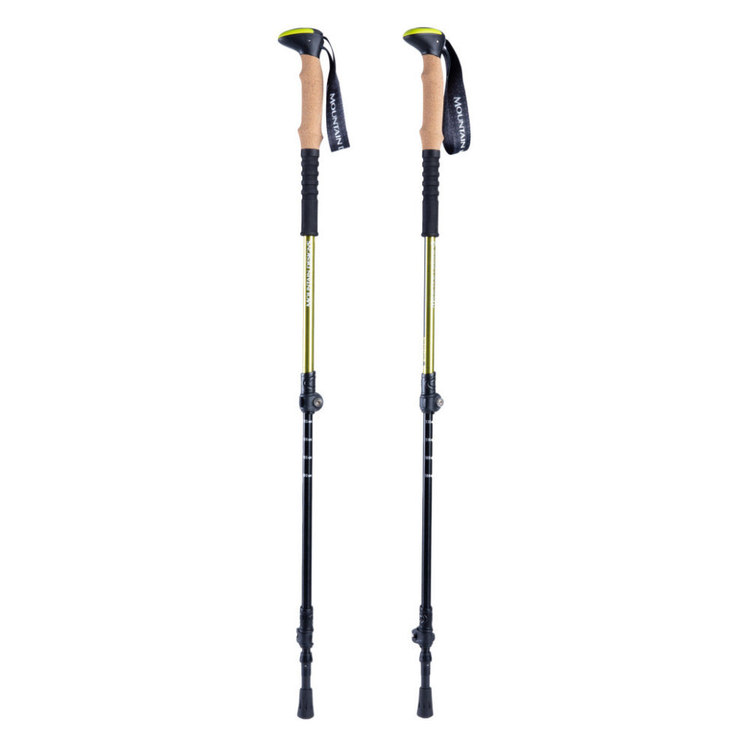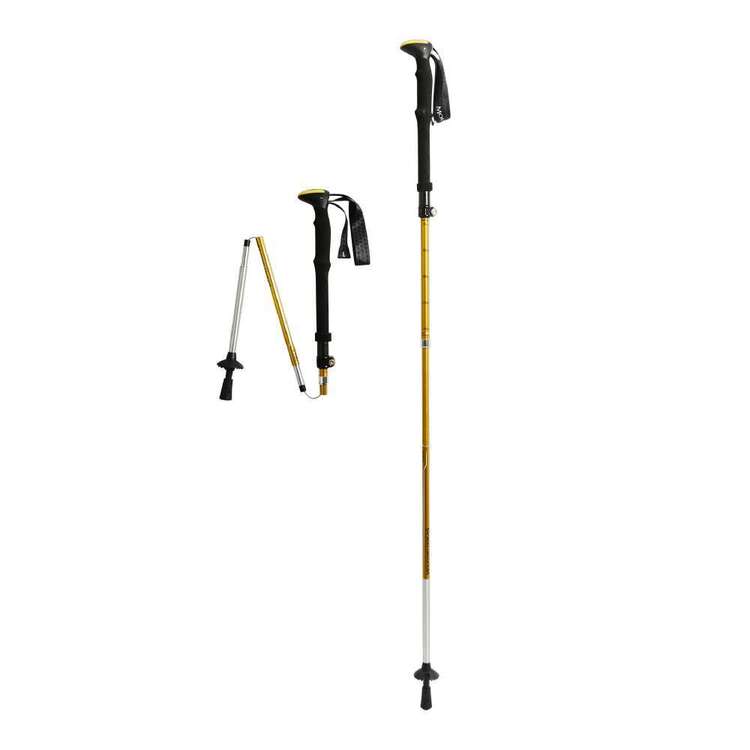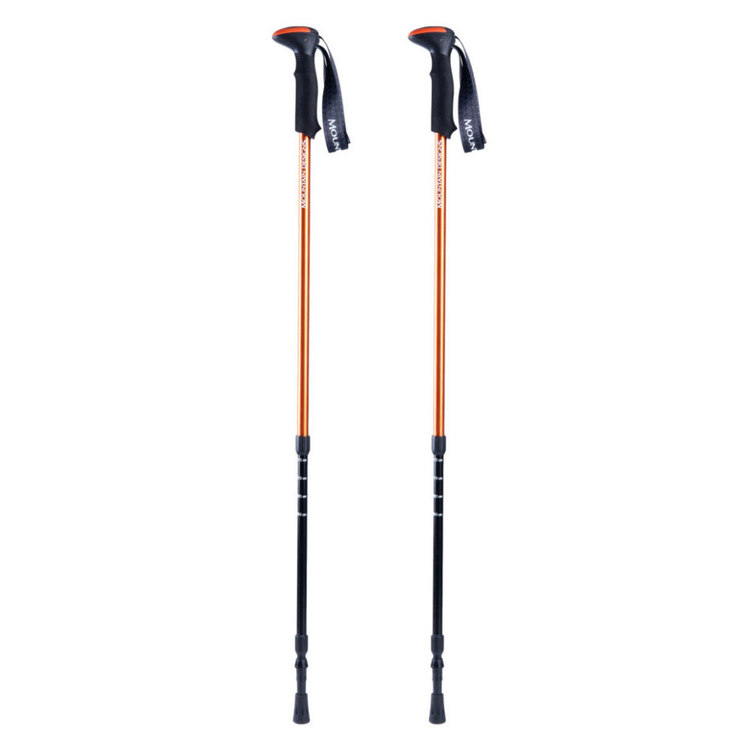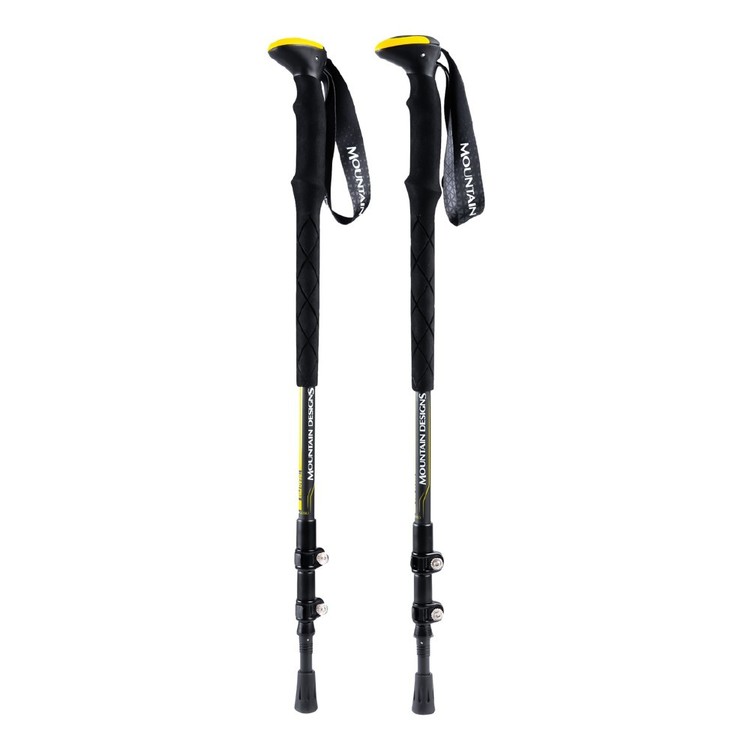| Your browser is not supported. | ||
|
Please browse our site using any of the following options:
| ||
Hiking Poles
Blaze your own trail with a pair of Mountain Designs hiking poles. Explore a larger collection of Hiking Poles at Anaconda.
5 items found.
What are the benefits of using hiking poles?
Hiking poles (sometimes called trekking poles, walking poles, trail walking sticks or mountain climbing poles) are designed to enhance stability as you walk. They provide footing support on a variety of terrain types, and help to manage weight and force distribution, which has an impact on the energy you exert through your arms and legs while trekking.
Hiking poles are one of those hiking accessories that you won't realise the benefits of until you forget them on a hard trail expedition.
What hiking pole types are available?
Unlike walking sticks which are rigid, hiking poles are (as a general rule) adjustable. Typically they come in two designs - collapsible hiking poles and telescopic hiking poles. Collapsible hiking poles often use a tri-fold design with an internal tension cable, and when not in use can be 'folded up' into a smaller unit for storage and transit. Telescopic hiking poles have sections that slide into each other. This is how their length can be adjusted, and how you pack them away. We stock a variety of both designs from both Mountain Designs and Black Diamond.
How can you choose the best hiking pole?
The best hiking poles deliver ongoing support and reliable stability for your footing adventure after adventure. Things to consider when choosing trekking poles include:
Strength & Durability - Your hiking pole needs to be strong enough to support your weight, as well as the forces that get exerted in various directions as you hike across different terrain. Pole shafts should be strong and durable, so look for construction materials such as aluminium or carbon.
Weight - The best hiking poles will be strong, but also lightweight. Carbon or aluminium shafts provide excellent strength-to-weight ratios, so you feel supported but you don't feel like you're carrying enormous bars of steel.
Length Adjustability - You'll need to change the hiking pole height to suit your stature, walking style and the gradient of the ground you're walking on. Make sure the length of your trekking poles can be adjusted easily. Look for pole locking mechanisms that are easy to use.
Handle Length & Composition - You'll be gripping the handle all day so you want something that is comfortable. The best hiking poles have ergonomic handles that are pre-shaped to work with the contours and shape of your hand. Most of them are made out of soft EVA foam, but some will offer cork, which absorbs perspiration and moulds to your hand to improve grip. Some designs also have an extended handle length, which conveniently eliminates the need to adjust your pole length as the ground slope changes.
Wrist Straps - Most trekking poles have wrist straps, and most of these are labelled 'left' and 'right' for convenience. Wrists straps are an important feature as they help to distribute the force of the ground impact across your hands, wrists and arms in combination, rather than the force being absorbed straight into your hands. This will be less energy-sapping and easier for your grip over the course of a long trek. Wrist straps are also handy should your grip come loose. If you slip or fall and let go of your hiking pole, it will stay attached to your person and be within immediate reach, rather than losing it all together.
Packability - This relates to storage and transit. Collapsible hiking poles or telescopic adjustable hiking poles are convenient as they can be 'packed down' into smaller units that take up less space. Look for a folding hiking pole design (collapsible) or a retractable hiking stick design (telescopic).
What is the correct way to use hiking poles?
You should use your hiking poles to gain additional support and stability when you're hiking, especially on uneven or rugged terrain where you need help keeping your balance and footing. The key to using them correctly is ensuring you have the correct hiking pole height for your stature, walking style and the surface you are walking on. As a general rule, you should set your hiking pole height such that your arm is bent at a 90-degree angle to a flat ground gradient. This provides the most efficient mechanical support when it comes to weight and force distribution.
Once you have the pole length sorted, grip the handle as if you are making a fist, and make sure you use the wrist straps as they will help further with force distribution. Try to avoid excessive lateral impact or force on the pole shaft, as this can compromise the integrity of the design and affect performance.
How tall should your hiking pole be?
To get the most out of your hiking poles, you need to set them at the correct height, which varies from user to user depending on their height, walking style, and the gradient of the terrain they are trekking on. As a general rule, the standard setting for your hiking pole height should be such that your arm is bent at a 90-degree angle to a flat ground slope. Use the following instructions as a guide to setting your hiking pole height:
Step 1 - Stand on flat ground, with your arms by your sides, and relax your shoulders.
Step 2 - Bend your elbow so that your forearm is horizontal out in front of you at 90 degrees to your body with your palms facing in towards each other.
Step 3 - Adjust your pole so that the top of the handle is at the same height as the top of your palm. If you have long legs for your height, it may be more comfortable to set the pole length to the tip of your outstretched thumb; if you have short legs for your height, it may be more comfortable to set the pole length to the bottom of you palm.
You may also need to change the hiking pole height if the gradient of the slope you're trekking on changes.
Uphill - When moving up a hill, shorten the poles from your standard setting by approximately 5-10cm so that you are not overstretching. The exact adjustment length will depend on the steepness of the inclination and your walking technique, but as a basic guide, thigh height is acceptable.
Downhill - When moving downhill, lengthen the poles from your standard setting by approximately 5-10cm so that you avoid bending too much. Again, the exact adjustment length will depend on the steepness of the decline and your walking technique, but as a basic guide, chest height is acceptable.
Contouring - When traversing across a slope, use a shorter length pole on the uphill side and a longer length pole on the downhill side. The exact adjustment length will again depend on the slope gradient.
Can you buy replacement parts for hiking poles?
Most good hiking poles are constructed with a carbide tip at the pole end to provide greater traction on standard trails or on slippery surfaces such as ice, snow and mud. These tips can also be covered with a rubber foot for use on harder terrain such as rock or concrete. Substantial, ongoing use of your hiking poles will eventually lead to wearing down of the rubber feet or carbide tips, so these will need to be replaced. At Mountain Designs, you can buy replacement carbide tips and replacement rubber feet, as well as replacement hiking pole baskets, if required.
